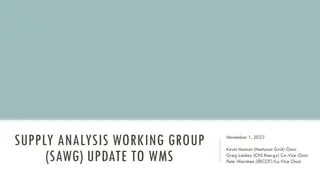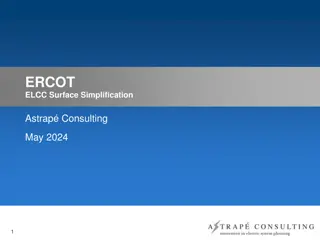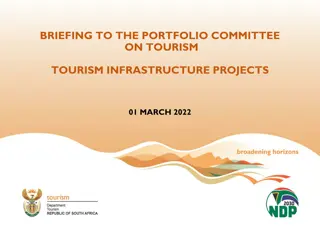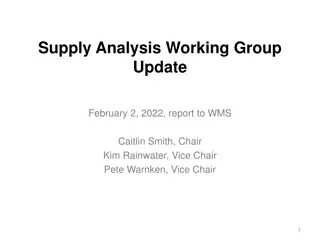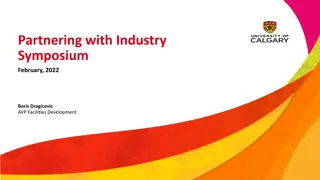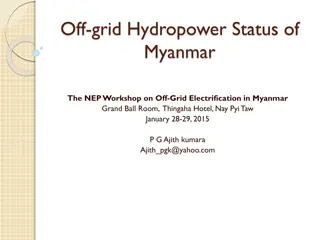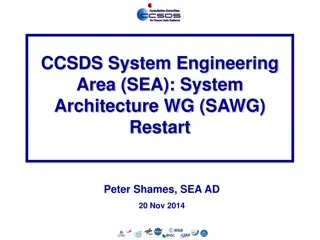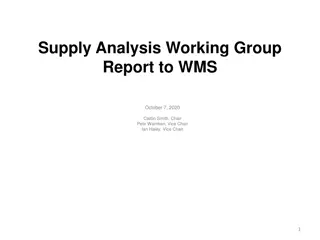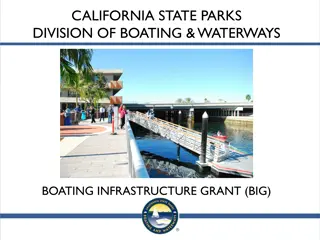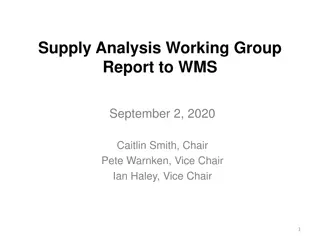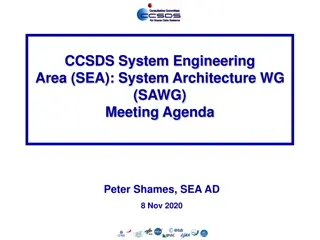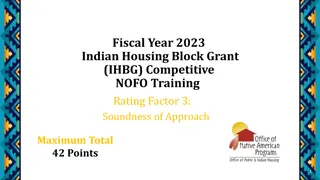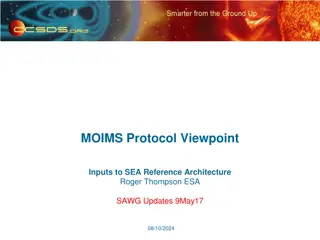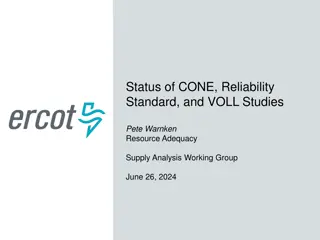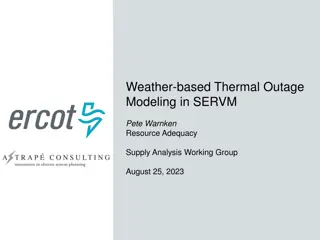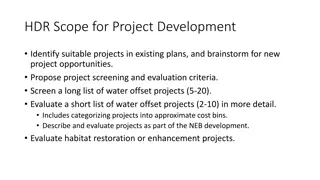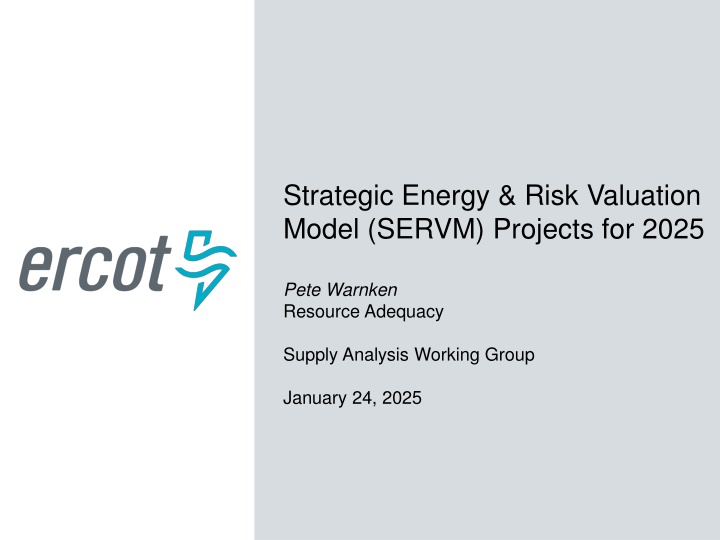
Enhancing Energy Risk Valuation and Reliability for 2025 Projects
Explore the SERVM projects for 2025 focusing on weather event modeling, risk assessment, and zonal reliability analysis. Enhancements include adjusting load profiles, analyzing outage durations, and developing multi-zonal models for improved system reliability and deliverability. Discover the methodologies and tools used to evaluate energy supply risks in the transmission planning sector.
Download Presentation

Please find below an Image/Link to download the presentation.
The content on the website is provided AS IS for your information and personal use only. It may not be sold, licensed, or shared on other websites without obtaining consent from the author. If you encounter any issues during the download, it is possible that the publisher has removed the file from their server.
You are allowed to download the files provided on this website for personal or commercial use, subject to the condition that they are used lawfully. All files are the property of their respective owners.
The content on the website is provided AS IS for your information and personal use only. It may not be sold, licensed, or shared on other websites without obtaining consent from the author.
E N D
Presentation Transcript
Strategic Energy & Risk Valuation Model (SERVM) Projects for 2025 Pete Warnken Resource Adequacy Supply Analysis Working Group January 24, 2025
2025 SERVM Projects List Weather Event Modeling Enhancements January Reliability Risk Analysis Event Duration Risk Assessment Zonal Reliability Model Analysis & Development Reliability Standard Assessment Prototyping Supply Deliverability Analysis for Transmission Planning ELCC Methodology Refinement Probabilistic Assessment (for NERC LTRA) 2 ERCOT Public
Weather Event Modeling Enhancement: January Analysis The historical weather year approach used in SERVM is dependent on the timing of extreme weather events. The two most extreme winter events in the historical simulated window were in December 1989 and February 2021. The timing of these events are coincidental, and so the distribution of potential extreme peak loads for January is under-represented. The purpose of this analysis is to shift load/wind/solar profiles, as statistically justified, such that the distribution of the most extreme peaks and associated generator outages covers the full range of winter dates with potential risk. This approach keeps the winter season loss-of-load risk the same, but the risk distribution is modified to better reflect the risk in January. 3 ERCOT Public
Weather Event Modeling Enhancement: Duration Analysis Current SERVM inputs are calibrated to system average conditions which may understate the risk of extended outages driven by long individual generator outages. PowerGEM will explore assumptions around cold weather outage durations by calibrating to discrete unit-level outage events during cold weather. The effects of fuel supply outages and repair times will also be evaluated, and more granular cold weather outage inputs will be defined in SERVM. The results of the base case assumptions will be compared to the adjusted inputs to determine if and how the modified outage duration approach is applied going forward. 4 ERCOT Public
Zonal Reliability Model Analysis & Development Purpose of this project is to transform the current SERVM implementation from a single-zone model to a multi-zonal model to account for inter-zonal generation deliverability impacts on system reliability. Develop zone definitions using TARA* clustering functionality that considers electrical distances of each bus point with respect to every defined flowgate (Generic Transmission Constraint (GTC) or other constraint). Determine transfer capabilities between the zones, imports/exports limits for neighboring grids, and aggregated transfer capabilities as applicable. Using the zone definitions, develop synthetic zonal load profiles for 44 weather years and allocate resources to the zones. Conduct simulations for one study year (2026) to assess generation deliverability impacts in relation to the original single-zone model. *TARA = PowerGem s Transmission Adequacy & Reliability Assessment tool 5 ERCOT Public
Reliability Standard Assessment Prototyping The prototyping project will explore how the Reliability Assessment study will be performed starting in 2026 PowerGEM will work with ERCOT and stakeholders to understand key design considerations for analyzing and ensuring reliability. Given the nascent proposed approach to analyzing transmission and generation reliability using the zonal SERVM implementation, formal procedures will be evaluated and established to ensure the results from this process are appropriately built into the Reliability Standard s Reliability Assessments going forward. A test implementation (trial simulation for forecast year 2026) will be performed to provide guidance on potential outcomes and necessary refinements for the first official Reliability Assessment starting in 2026. 6 ERCOT Public
Supply Deliverability Analysis for Transmission Planning This is an exploratory project intended to investigate how the probabilistic multi-zonal SERVM implementation can be integrated into ERCOT s transmission planning processes to support generation deliverability risk considerations. Task 1: Data Collection, Base Case Setup, and Input Validation. Task 2: Base network development using SERVM and TARA, plus a change case with one transmission system upgrade. Task 3: Simulate up to 1,000 load flow cases comprised of a combination of load, wind, and solar conditions plus generator/transmission component contingencies. Task 4: PowerGEM will aggregate reliability results for the full distribution of scenarios (load flow cases). Task 5: PowerGem will conduct benefits analysis test cases for several objectives in FERC Order 1920, such reducing Loss of Load Probability (LOLP)/reserve margin and mitigating extreme weather impacts. 7 ERCOT Public
Effective Load Carrying Capability (ELCC) Methodology Refinement This project is intended to investigate potential refinements to the ELCC approach developed for CDR reporting. Explore refinements to seasonal and risk period ELCC estimation. Consider expanding portfolio resource penetration levels. Investigate incorporating load shape changes due to planned. interconnection of Large Loads (data centers, industrial, and crypto- currency mining, etc.). Investigate refining the SERVM results calibration approach that uses Excel. If the project budget allows, continue investigating estimation of thermal ELCCs. (The 2022 ELCC study provides indicative thermal ELCCs: https://www.ercot.com/files/docs/2022/12/09/2022-ERCOT-ELCC-Study- Final-Report-12-9-2022.pdf.) 8 ERCOT Public
NERC Probabilistic Assessment NERC now requires annual probabilistic reliability assessments be conducted every year, rather than every other year, based on the resources and load forecast used for the NERC Long Term Reliability Assessment. This project entails PowerGem supporting ERCOT staff in conducting the Probabilistic Assessment using SERVM. The assessment calls for probabilistic simulations for two forecast years (assumed to be 2027 and 2029 for this year s assessment). Preliminary and final results are typically due in mid-August and mid- September, respectively. 9 ERCOT Public


